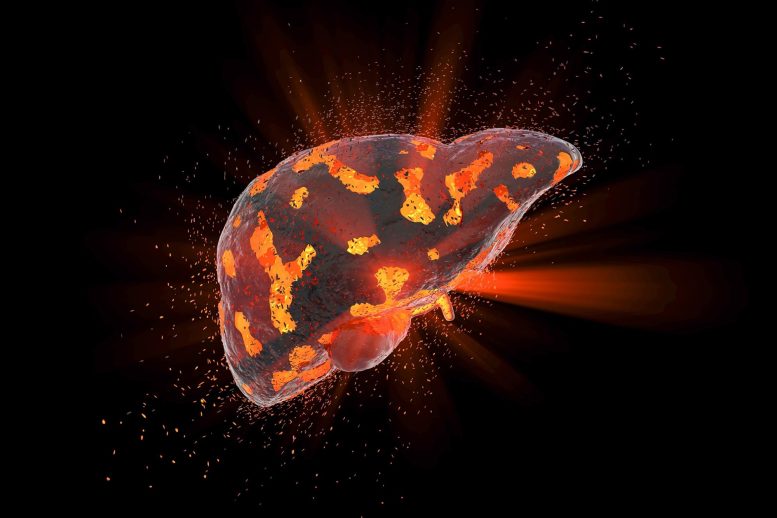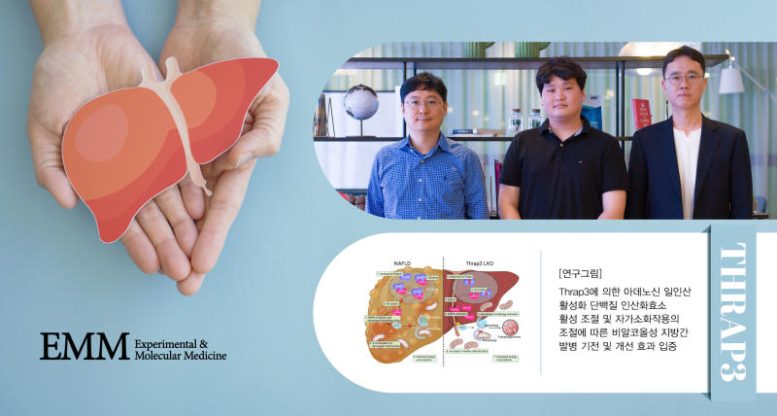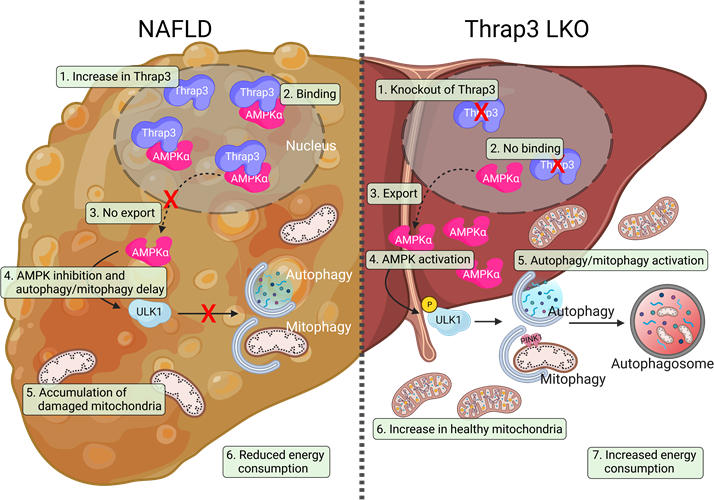
New research reveals that the Thrap3 protein aggravates NAFLD by disrupting fat metabolism in the liver, suggesting that targeting Thrap3 could lead to new treatments for the disease.
A breakthrough study, jointly led by Professor Jang Hyun Choi and Professor Sung Ho Park from the Department of Biological Sciences at UNIST has identified a key factor implicated in the progression of non-alcoholic fatty liver disease (NAFLD), which is often triggered by obesity. The researchers found that a protein known as Thrap3, which is associated with thyroid hormone receptors, significantly worsens NAFLD. It does so by suppressing the activity of adenosine monophosphate-activated protein kinase (AMPK), a key regulator of fat metabolism in the liver.
Significance and Mechanism of Thrap3 in NAFLD
NAFLD encompasses various metabolic diseases such as fatty hepatitis and cirrhosis resulting from excessive fat accumulation. Despite its prevalence, effective treatments for NAFLD have been limited. However, this groundbreaking research sheds light on potential therapeutic approaches.

A breakthrough study, jointly led by Professor Jang Hyun Choi and Professor Sung Ho Park from the Department of Biological Sciences at UNIST has identified an important factor involved in the development of non-alcoholic fatty liver disease (NAFLD) caused by obesity. Credit: UNIST
Through animal experiments conducted on rats, the research team demonstrated that Thrap3 directly binds to AMPK within the liver. This interaction prevents AMPK from translocating from the nucleus to the cytoplasm and impairs autophagy—a process crucial for breaking down triglycerides and reducing cholesterol levels. In essence, inhibiting Thrap3 expression presents a promising avenue for effectively treating NAFLD.
Research Impact and Future Prospects
“We have encountered significant challenges while developing treatment strategies for non-alcoholic fatty liver disease. However, our discovery of the Thrap3 gene provides us with an effective method to tackle this condition,” commented Professor Choi.

Schematic diagram of the mechanism by which Thrap3 affects NAFLD through translocation of AMPK. Credit: UNIST
Additionally, it was confirmed that suppressing Thrap3 expression effectively improves non-alcoholic steatohepatitis—an inflammatory disease stemming from fatty liver.
Reference: “Thrap3 promotes nonalcoholic fatty liver disease by suppressing AMPK-mediated autophagy” by Hyun-Jun Jang, Yo Han Lee, Tam Dao, Yunju Jo, Keon Woo Khim, Hye-jin Eom, Ju Eun Lee, Yi Jin Song, Sun Sil Choi, Kieun Park, Haneul Ji, Young Chan Chae, Kyungjae Myung, Hongtae Kim, Dongryeol Ryu, Neung Hwa Park, Sung Ho Park and Jang Hyun Choi, 32 July 2023, Experimental & Molecular Medicine.
DOI: 10.1038/s12276-023-01047-4
Supported by funding from the Korea Research Foundation under the Ministry of Science and ICT, National Mouse Phenotype Analysis Group (KMPC), and UNIST Future Lead Project. Professor Jang Hyun Choi, alongside Professor Sung Ho Park, served as corresponding authors of the paper, with Dr. Hyun-Jun Jang and Dr. Yo Han Lee from the Department of Biological Sciences at UNIST participating as co-authors.









Be the first to comment on "Scientists Uncover Potential Treatment for Non-Alcoholic Fatty Liver Disease"